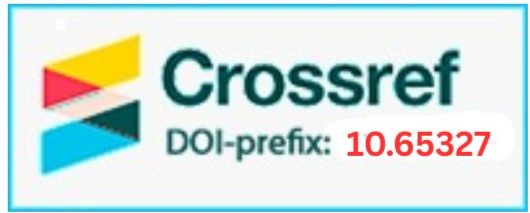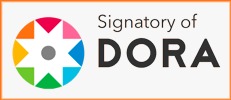GC-MS assay of hexane and ethanol extracts of spirulina algae and detecting their antibacterial activity against uropathogenic S.aureus and E.coli
DOI:
https://doi.org/10.22141/2307-1257.14.2.2025.516Keywords:
spirulina algae, hexane, ethanol, E.coli, S.aureus, DMSO, GC-MCAbstract
Background. This study aims to assess the antimicrobial activity of spirulina hexane and ethanol extracts. The task is to discover standardized analytical methods for isolating original bioactive compounds from algae for fighting harmful bacteria such as E.coli and Staphylococcus aureus that cause urinary tract infections. Materials and methods. The study included the collection and preparation of spirulina algae from Nasiriyah, Iraq. The algae were cleaned, dried, and minced into powder. Twenty grams of the dried powder were mixed with 200 ml of ethanol and hexane solvents and subjected to ultrasonic extraction. The extracts were filtered and stored in sterile conditions. Antimicrobial activity was evaluated using varying concentrations (25, 50, 75, and 100 mg/ml) against bacterial strains Staphylococcus aureus and E.coli by the Kirby-Bauer disk diffusion method. Results. The ethanol extract showed the highest inhibitory effect against E.coli, with a zone of inhibition measuring 20.00 ± 2.00 mm at 100 mg/ml. It also showed inhibitory effect against S.aureus, with a zone of inhibition measuring 15.60 ± 1.51 mm at 100 mg/ml. The hexane extract showed significant activity against E.coli, with an inhibition zone of 17.60 ± 1.15 mm at 100 mg/ml,
and exhibited inhibitory effect against S.aureus, with a zone of inhibition measuring 14.80 ± 1.30 mm at 100 mg/ml. Then the activity decreased for both extracts with a reduction in concentration. Comparative analysis demonstrated that both extracts outperformed several tested antibiotics in terms of efficiency against the respective bacterial strains. Conclusions. The findings indicate that algae extracts have significant antimicrobial properties, making them potential alternatives to conservative antibiotics in treating urinary tract infections. The study highlights the importance of these extracts in emerging specific preparations from algae for antimicrobial applications, contributing to the field of alternative medicine.
Downloads
References
Ahmed N, Sheikh MA, Ubaid M, Chauhan P, Kumar K, Choudhary S. Comprehensive exploration of marine algae diversity, bioactive compounds, health benefits, regulatory issues, and food and drug applications. Measurement: Food. 2024 Jun;14:100163. doi: 10.1016/j.meafoo.2024.100163.
Ameen IA, Okab HF. Phyto-activity of Syzygium aromaticum extract against pathogenic bacteria isolated from chronic tonsilitis patients. Romanian J Infectious Diseases. 2024;27(1):5-10. doi: 10.37897/RJID.2024.1.1.
Hamim SS. Molecular characterization of mecA gene in Methicillin-Resistant Staphylococcus aureus. University of Thi-Qar Journal of Science. 2016 Dec;6(1):25-29. doi: 10.32792/utq/utjsci/v6i1.50.
Phukan MM, Kumar R, Gupta K, et al. Aquatic Microbial Oxygenic Phototrophs: A Short Treatise on Diverse Applications and the Future Biofuel Scenario. In: Singh A, Srivastava S, Rathore D, Pant D, editors. Environmental Microbiology and Biotechnology. Singapore: Springer; 2021. 135-152 pp. doi: 10.1007/978-981-15-7493-1_7.
Kumar A, Soratur A, Kumar S, Venmathi Maran BA. A Review of Marine Algae as a Sustainable Source of Antiviral and Anticancer Compounds. Macromol. 2025;5(1):11. doi: 10.3390/macromol5010011.
Pereira RH, Braga CK, Serra B, Nadalin VG. Socio-spatial inequalities in access to opportunities in Brazilian cities, 2019. Available from: https://www.ipea.gov.br/acessooportunidades/publication/2019_td2535_aop_primeiro/. Portuguese (Brazil).
Lafta S, AL-Waheeb AN. Identification Flavonoid of Bougainvillea spectabilis flowers in Nasiriyah by HPLC and Detection Effect of Extract as Antibacterial. University of Thi-Qar Journal of Science. 2024;11(2):111-115. doi: 10.32792/utq/utjsci/v11i2.1246.
Okab HF, Salih MB, Jarulla BA. Immunopathy of COVID-19 Patients without Chronic Disease: Proinflammatory and Anti-Inflammatory Cytokines Attributable to Disease Severity. Laboratory Diagnostics Eastern Europe. 2024;13(1):47-59. doi: 10.34883/PI.2024.13.1.004.
Kadhim MJ, Sosa AA, Hameed IH. Evaluation of anti-bacterial activity and bioactive chemical analysis of Ocimum basilicum using Fourier transform infrared (FT-IR) and gas chromatography-mass spectrometry (GC-MS) techniques. Journal of Pharmacognosy and Phytotherapy. 2016 Jun;8(6):127-146. doi: 10.5897/JPP2015.0366.


 ISSN 2307-1257
ISSN 2307-1257 ISSN 2307-1265
ISSN 2307-1265



















